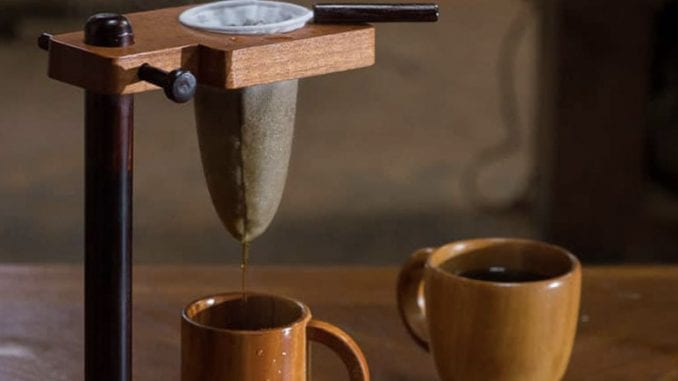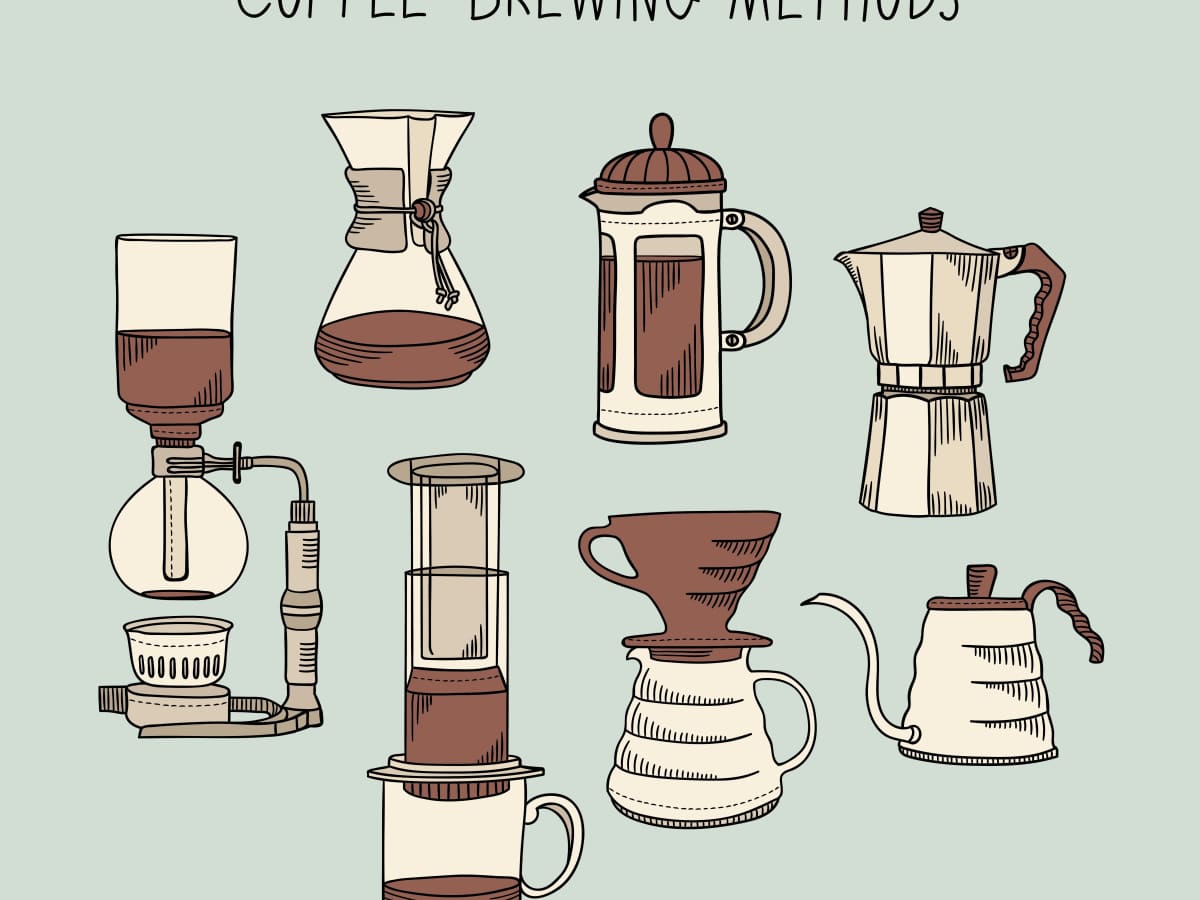The Scientific Research Behind Coffee Developing: How Temperature and Time Affect Your Drink
Recognizing the scientific research behind coffee developing reveals that temperature and time are not plain variables yet essential elements that dictate the beverage's flavor profile and total top quality. The ideal brewing temperature level normally falls in between 195 ° F and 205 ° F, while the duration of removal differs substantially across various methods. This interplay of variables can result in a mug that is either disappointing or delightful. As we explore the subtleties of these aspects, the question occurs: how can one successfully balance temperature and time to achieve that excellent mixture?
The Chemistry of Coffee Extraction
The chemistry of coffee extraction delves into the detailed procedures that transform raw coffee beans right into the fragrant beverage delighted in worldwide. This change mainly involves the solubility of different substances existing in the beans, which are influenced by elements such as work size, water top quality, and the developing technique employed.
During the brewing procedure, warm water serves as a solvent, drawing out soluble compounds, consisting of high levels of caffeine, lipids, sugars, and acids, from the coffee grounds. Each compound adds to the taste profile, scent, and body of the final beverage. As an example, acids are accountable for tasty and bright notes, while oils add to an abundant mouthfeel.
The removal process is not consistent; different compounds liquify at various prices. The first stages of developing essence acids and sugars, resulting in a pleasant acidity, while prolonged removal can bring about anger due to over-extraction of unfavorable substances. Comprehending these chemical communications is essential for maximizing developing techniques, as the balance between extraction time and water temperature can dramatically influence the total high quality of the coffee. Inevitably, understanding the chemistry of coffee removal is vital to accomplishing a well-shaped and delicious cup.
Perfect Developing Temperatures
Discovering the best brewing temperature level is crucial for unlocking the full capacity of coffee flavors and scents - coffee brewing methods. Research shows that the optimal variety for brewing coffee lies in between 195 ° F to 205 ° F(90 ° C to 96 ° C) Within this variety, the extraction process effectively dissolves the desirable soluble compounds in coffee beans, bring about a savory and well balanced cup
Brewing at reduced temperatures, such as below 195 ° F(90 ° C ), may result in under-extraction, generating a weak and acidic brew with muted flavors. Conversely, brewing at temperatures surpassing 205 ° F(96 ° C) can result in over-extraction, creating a bitter and severe preference due to the excessive dissolution of undesirable substances, such as tannins.
Furthermore, the suitable brewing temperature level can differ depending upon the coffee bean kind and roast level. For example, lighter roasts commonly take advantage of a little higher temperature levels to enhance their complicated flavor profiles, while darker roasts may be much better matched to reduced temperatures to mitigate bitterness.
Ultimately, maintaining precision in developing temperatures is critical for attaining a harmonious balance of flavors, making certain that every cup of coffee delivers a satisfying sensory experience.
Effect of Brewing Time
Brewing time plays a pivotal duty in determining the taste account and general quality of coffee. Much shorter developing times can result in under-extraction, leading to a weak or sour taste, as not adequate soluble substances are liquified.
Ideal brewing time varies depending upon the approach used and the work dimension of the coffee. A French press usually requires concerning four minutes, while espresso removal is usually completed within 25 to 30 seconds. It is important to calibrate brewing time in conjunction with other variables, such as water temperature and coffee-to-water proportion, to achieve the wanted flavor profile.
Understanding the impact of developing time allows coffee lovers to fine-tune their developing techniques, ultimately enhancing the sensory experience of their mug (coffee brewing methods). With mindful attention to this variable, one can unlock the full possibility of the coffee, exposing its distinct attributes and subtleties
Developing Techniques and Their Results

For circumstances, methods like French press and cold brew enable a longer steeping time, leading to a fuller body and durable taste due to increased extraction of oils and soluble solids. On the other hand, espresso developing uses high stress and a shorter removal time, generating a concentrated shot that highlights intense flavors and a rich crema.
Pour-over techniques, such as Chemex or V60, provide an even more regulated extraction procedure, enabling the maker to manipulate circulation rate and water circulation, which can improve illumination and clearness. Percolation techniques cycle water via the coffee premises numerous times, leading to a stronger, commonly bitter flavor.
Lastly, the use of paper filters versus metal filters can additionally impact the last preference; paper filters usually produce a cleaner cup by capturing oils and fine particles, while metal filters enable more oils to pass through, contributing to a fuller mouthfeel - coffee brewing methods. Understanding these subtleties can raise the coffee experience considerably
Tips for Perfecting Your Mixture
A well-executed brew can change also the most basic coffee right into a remarkable experience. Grind the beans simply before making to make best use of freshness, guaranteeing the work size matches your brewing approach-- coarser for French press and finer for espresso.
Water high quality plays useful source a crucial function; usage filtered water without impurities. The excellent brewing temperature level ranges in between 195 ° F and 205 ° F(90 ° C to 96 ° C ) Also hot can blister the coffee, while too cool may under-extract flavors.
Timing is equally essential. For immersion approaches, steeping for 3 to five mins is optimum, whereas drip approaches typically take about five minutes. Explore brew times to find your preferred stamina.

Verdict
In summary, the intricate relationship between temperature level and time is extremely important in the coffee developing procedure. Abiding by optimal developing temperatures in between 195 ° F and 205 ° F, alongside precise timing customized to every method, ensures the wanted taste profile is achieved. Recognizing these scientific principles equips people to refine their developing techniques, ultimately resulting in a much more pleasurable and balanced coffee experience. Mastery of these factors is vital for any kind of coffee lover seeking excellence in their beverage.
Comprehending the scientific research behind coffee developing discloses that temperature level and time are not mere variables but crucial aspects that determine the drink's taste account and general top quality. Comprehending these chemical communications is critical for optimizing brewing techniques, as the equilibrium in between removal time and water temperature can considerably affect the total high quality of the coffee.Developing time plays a critical function in identifying the flavor account and total high quality of coffee. By concentrating on these aspects-- bean quality, grind size, water temperature level, visit this website steeping time, and this contact form proportion-- you can elevate your coffee brewing process, resulting in a consistently premium cup.
In recap, the elaborate relationship in between temperature and time is vital in the coffee brewing procedure.